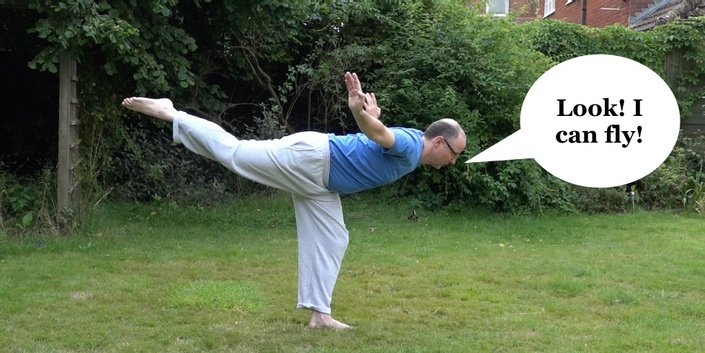Breathing. You won’t last long without it. If I may borrow from my forthcoming The Windsor Method: The Principles of Solo Training,
“Breathing exercises of various kinds are fundamental to most traditional martial arts, and are increasingly widely used in modern military and police training. This is one area of martial arts that is especially prone to woo-woo bullshit, so let me be clear; no matter how much you train your breathing, you will not learn to fly, stop bullets, or kill without touching. Sorry.
That said, breathing exercises are a kind of magic. I’ve always been drawn to the more indirect, even spiritual, aspects of martial arts training, and breathing exercises are perhaps the most obvious example of that. What possible use is gently waving your arms about and breathing deeply in a fight?
Well, none. But training is not fighting. Push-ups don’t help much when boxing either. But have you ever met a boxer who didn’t do push-ups?
The primary benefits of breathing practice can be summed up as fitness and calmness. By learning to breathe better, we are automatically fitter because we can get more air for less work. By learning to use breathing to control our nervous systems (at least up to a point) we become better able to manage stress and control fear.
Most people think of me as a swordsman, and I suppose that’s true enough. Something all my regular students know that maybe you don’t is that I might go a month, or even three, without touching a sword. But hell will freeze over before I spend even a week without doing some kind of breathing practice. It’s the foundation of my skill at arms, and the rock upon which I build my physical and mental practice.”
So your challenge this month is just this: breathe better. If you want more concrete instructions, how about this: deliberately prioritise breathing exercises in your training this month, and when doing any exercise, pay especial attention to your breath.
It might be helpful to look at how to breathe.
How to Breathe
Your nose is a filter that cleans and warms the air you breathe, sampling it for good and bad smells, and it does a pretty good job of keeping dust out of your delicate lungs. The simplest way to breathe is just in and out of your nose.
Because your nose is a filter, it does slow down the rate that you can move air in and out. This is why if you are really out of breath, you will automatically switch to breathing in and out of your mouth. I play the trumpet occasionally, and was taught to always breathe in through my mouth when taking in air between passages, because it’s much faster.
If you think about it for a minute, it would seem that the most perfect breathing would be in through your nose and out through your mouth, because the air is cleaned and warmed going in, but it would leave through the exhaust not the filter. When possible, that’s how we do it while doing breathing exercises. It does require a bit more work though, as you have to change the structures at the back of your mouth to switch channels. Generally speaking, breathe in through your nose and out through your mouth.
It is also important to have your tongue in the right place. This is especially true for active martial artists, as anyone who has bitten through their own tongue when they got hit can attest. The tip of your tongue should rest on the hard palate, the bony ridge just behind the front teeth. This not only keeps your tongue out of the way, it also activates some of the stabiliser muscles in your neck.
To sum up then: tongue behind your teeth, breathe in through your nose and out through your mouth.
One of the first exercises I get my students to do is to breathe while walking. I know, challenging, right?
Walking and Breathing
Simply walk. Inside, outside, doesn’t matter. On your next in-breath, breathe in for four steps, then hold for four steps, breathe out for four steps, hold empty for four steps. Keep this going; after a round or two you’ll probably find it quite hard to keep your next in-breath slow and calm, in time with your steps. Use your walking pace to determine the pace of your breathing.
If a four-step pattern is quite easy, try extending it to six steps (in, hold, out, hold empty, repeat), or eight, or ten… I find that it’s a real challenge to maintain a ten-step pattern for more than a couple of rounds.
If you practice this regularly (say, every time you walk to work, or indeed anywhere), you will start playing games with it, and you can interval your way up to a pretty good standard of aerobic fitness by just doing this. You know you’re really training when you have to fight hard to keep that desperate in-breath long and slow, when every cell in your body is screaming at you to suck air in hard and fast.
And that’s the point. Depriving yourself of enough oxygen establishes a level of physiological distress that taps into some pretty deep biological processes. Any ancestor of yours who didn’t fight for air would have died very young and their genes would not be passed on. Air is more immediately vital than water, food, shelter or sex. Trigger this distress, and then maintain your calm, slow, movements and your absolute control over your behaviour, and you are practising the ability to maintain composure under pressure. You are also learning to breathe more deeply, and more efficiently.

